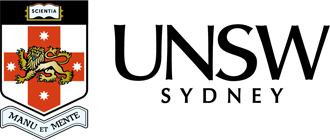Assessment Tools
OK, so now that you want to incorporate some aspects of global education into your curriculum, you should take a look and see what, if any, you are already doing well. You might be doing more than you think. Listed below are some assessment tools you can use to evaluate what you are doing, and help you think about simple things you can change.

The good folks the the University of New South Wales, Sydney (Australia), have put together a simple, yet valuable assessment tool for educators:
Global Competence can be developed within any discipline, and it can cut across disciplines. The seven global competence matrices — one main matrix and six content-area matrices — help teachers and students understand Global Competence and how to apply it. The main Global Competence matrix provides detail about the overall definition of Global Competence and how it might be demonstrated by students. The six content-area matrices supplement the main matrix with additional information and perspectives relevant to each content area and its objectives and offer teachers and students a way to look at global competence through the different content area lenses.
For teachers, the content-area matrices outline essential skills and concepts (big ideas) that connect the discipline with an application of global competence within and beyond the classroom. Each matrix can be used to guide teachers in designing lessons and developing assessments for student work.
All documents are in .pdf
Global Competence can be developed within any discipline, and it can cut across disciplines. The seven global competence matrices — one main matrix and six content-area matrices — help teachers and students understand Global Competence and how to apply it. The main Global Competence matrix provides detail about the overall definition of Global Competence and how it might be demonstrated by students. The six content-area matrices supplement the main matrix with additional information and perspectives relevant to each content area and its objectives and offer teachers and students a way to look at global competence through the different content area lenses.
For teachers, the content-area matrices outline essential skills and concepts (big ideas) that connect the discipline with an application of global competence within and beyond the classroom. Each matrix can be used to guide teachers in designing lessons and developing assessments for student work.
All documents are in .pdf
There are other assessment tools as well. One that is unique in that it not only helps teachers assess students, but it also helps administrators assess how district and state level policies help or hinder global ed. The complete document can be found here, but I have separated it into sections for convenience:
Now that you know what you are doing RIGHT, lets look at some ideas. Lets look at ways to include each of the four global competencies, including sample lesson and unit plans on the Curriculum Integration page.